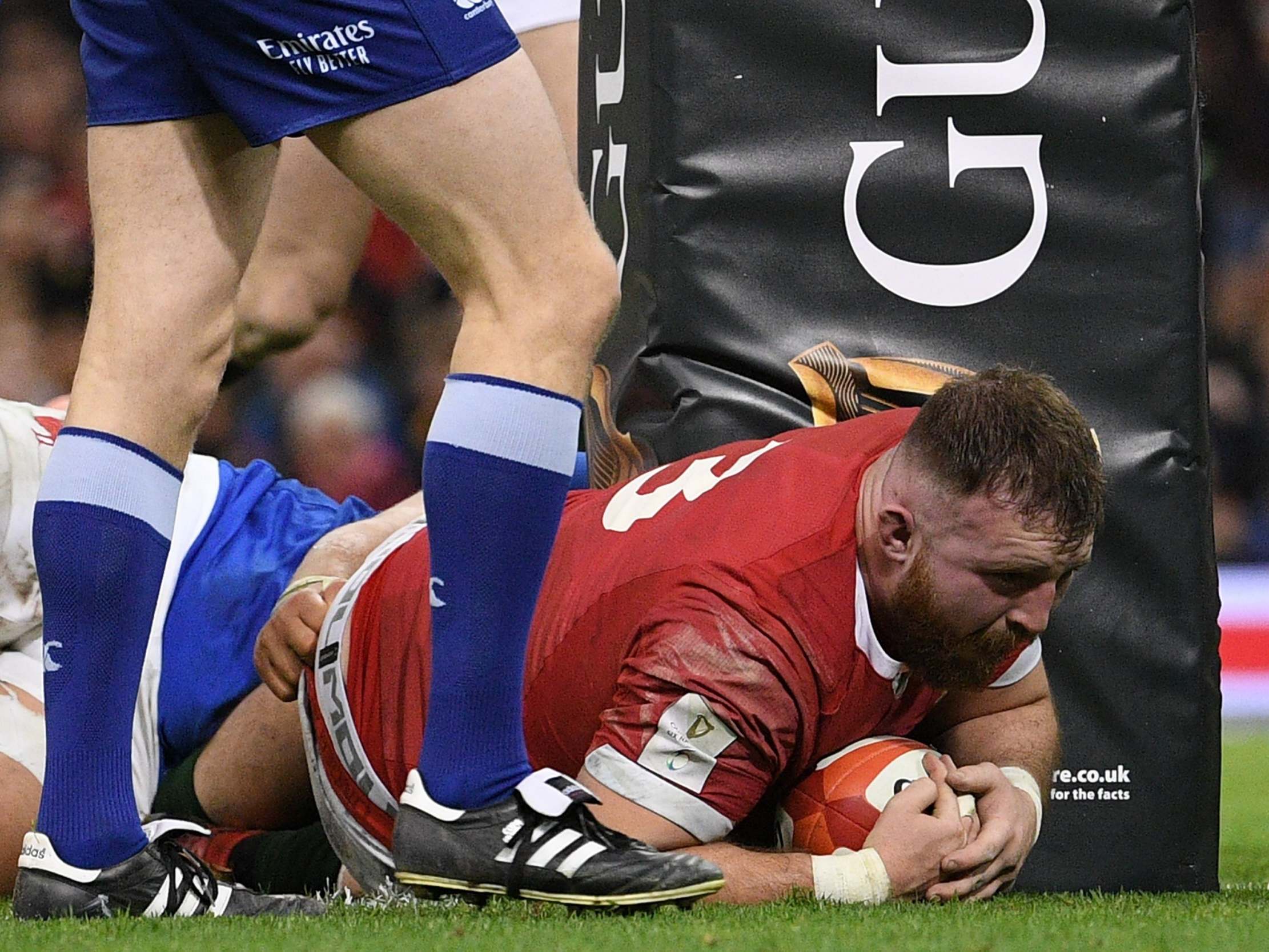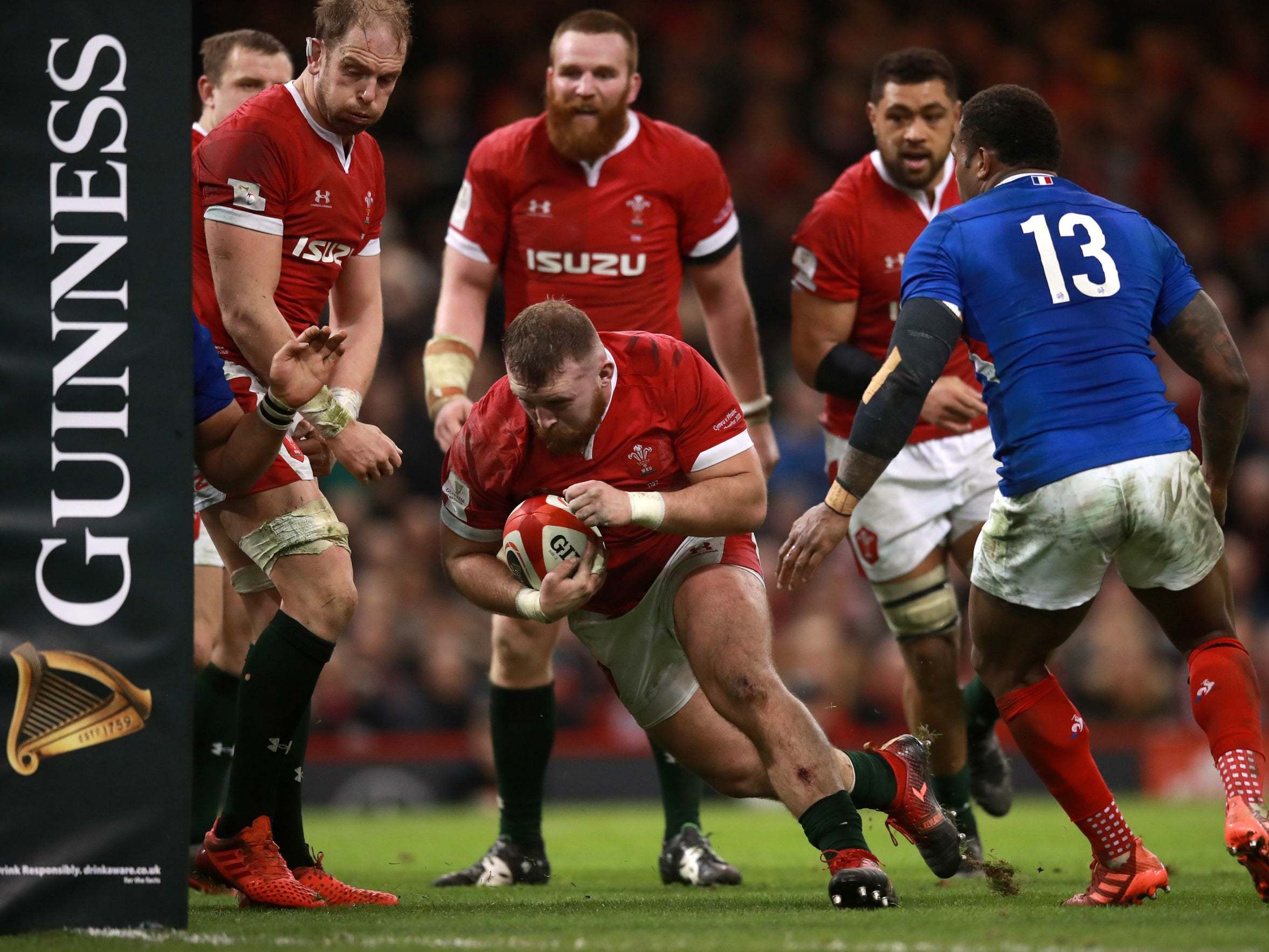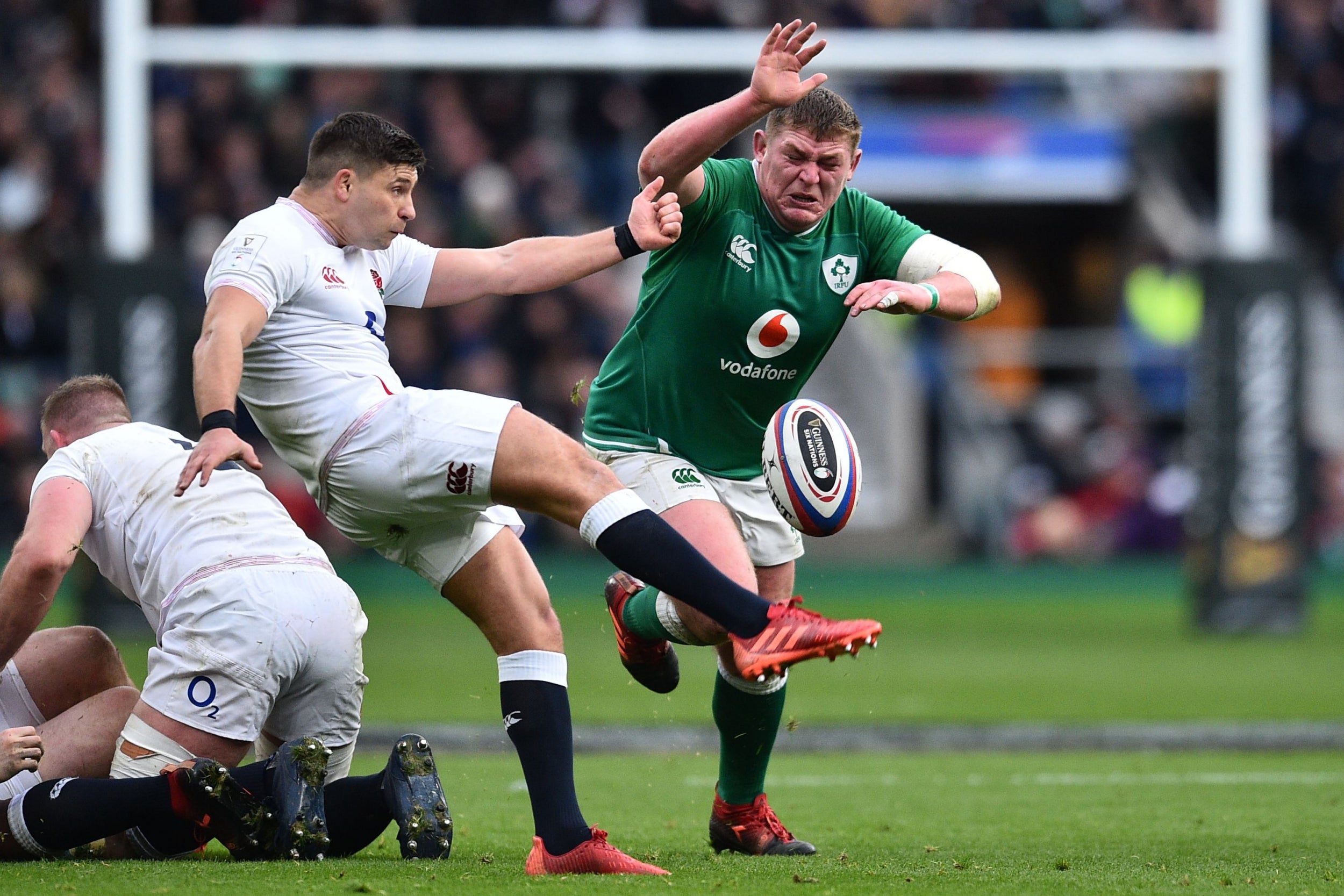Rugby’s growing marriage with data-driven strategy enabling the survival of the game’s fine art
Ryan Chambers reveals how Wales are utilising data analysis to not just bring the best out of their players, but ensure the worst is avoided when they hit the red zone, as Vithushan Ehantharajah learns


While assessing where things went wrong in their 23-27 defeat against France, Wales's performance analysts discovered a remarkable statistic regarding their prop, Dillon Lewis.
The 24-year old had scored the first of two Welsh tries and his first for his country. But it was the numbers around the score that commanded their attention.
Lewis had competed at 40 rucks in his 70 minutes on the field. A heck of a shift when you consider a team rucks collectively between 100 and 150 times a match. Not all were successful and one produced a penalty to France in the second half as Wales failed to overturn their eight-point halftime deficit.
But on 40 occasions Lewis was one of the quickest in a red shirt to the breakdown. Each of those 40 times he jostled with a member of a French pack boasting an average weight of 120kg per man.
The information, collected via state of the art inertial sensors, showed the Wales performance group two things. Firstly, that Lewis' performance was in line with trends seen over the last decade where modern props were not only required to scrum but be quick across the ground. Secondly, that he needed a great deal of rest and replenishment on Monday.
It would be hamming it up to say rugby is in the middle of a data "revolution". But the sport is certainly in a period where the scale of data collected and quality of analysis are in sync. Players, coaches and sports scientists are now closer aligned than ever before, and that relationship is only growing stronger.
From a player's perspective, the attention paid to statistics has somewhat diminished as the breadth of the data has increased.
Back in the day it was just heart rates and metres per minute. Players would compare their scores with those of similar positions for bragging rights. Coaches, too, would make assessments based on the little that was on offer.
As the numbers started diversifying, different parties put their stock in different measures. Eddie Jones, for instance, used to be big on the number of accelerations achieved in a match. Then it turned to "speed off the floor" – how long it takes a player to make a tackle and then return to his feet and, thus, back in play. This ended up becoming a ritual whereby the player who recorded the slowest speed after a tackle would be announced before the start of training and forced to wear a "s*** shirt" for the day. "You know what this is for, you lazy f****r!" Jones would cackle.
While some players still focus on their favoured numbers, the data has, for the most part, moved into the background and firmly in the jurisdiction of those who can utilise it best. By the time it reaches the forum of a team meeting, it has already been computed into useful and relevant information by experts like Ryan Chambers.
Chambers is a sports scientist for the Welsh Rugby Union, one of three boards – along with France and Scotland – who are using Catapult's state-of-the art Rugby Suite to better quantify the demands of a sport striving to count the uncountables.
In collaboration with those boards and other Premiership clubs, the technology has advanced to such a level that algorithms are now capable of automatically detecting scrums, kicks and contact involvements. It also measures the time a player is involved in contact, or rather "speed off the floor", settling any marginal "s*** shirt" calls.
So far this Six Nations, it has informed events from Monday to Friday ahead of the weekend's crucial engagements.
"If you look at what we're monitoring, it's volume: of collisions, distances, accelerations," says Chambers. "Those are the main dictators of fatigue. So when Lewis comes in after those 40 rucks, we are obviously thrilled that he's fit enough to get through that kind of work. But we knew come Monday we'd have to reduce his workload because it was excessive and to up his nutrition, up his recovery.
"But then we've also got the capacity to look at intensity in the week to make sure we are replicating match demands. Obviously it is never going to be exact, but we make sure whether it's a drill or a whole session, we are as close to match-pace as possible. And that he is peaking for, say, this Saturday against England, for a 4:45pm kick-off. It can be that pinpoint."
As ever the key to data is in its analysis, and Wales, like other teams, have used the information collected over the last few years, including during the 2019 World Cup, to analyse match trends.
For instance, it is now widely accepted that 80 minutes of play contains four, sometimes five "waves".
The first is the opening 10 to 15 minutes which is regarded as the most demanding passage of play, as teams look to go after the opposition. Then there's one before half-time, another after the restart and the fourth when substitutions are made, especially if brought on close together. A fifth might occur when a game is particularly close as one team starts to chase the game, as Wales did against France.
On a personal level, they and other sides have been able to profile players and positions more effectively. This, Chambers believes, has been the biggest improvement and one which he believes can influence evolution within the wider game. Not so much tactically because, as Chambers points out, rugby is not a sport which you get to play entirely your own way. But certainly positionally.
"If we apply this information as well as we can, you will see positional profiles a bit better. So you understand what a prop does, what the hooker does, what you expect your second row to do.
"You can pick up what the individual traits are of these positions to make the players more suited to them. Instead of having everyone like ‘zebras’ – they're all the same. You can then pick up on subtle differences to what makes a player – their work rate or simply their ability – and build from there to make them world-class."

The nature of rugby means the biggest shifts will only occur with rule changes. On a developmental front, it is a relatively slow-moving sport. But it is no coincidence the examples Chambers offers are forwards.
Because it is up top where the most noticeable changes have taken place. Players like Dillon Lewis, England's Mako Vunipola and Ireland's Tadhg Furlong are examples of modern props benefitting from more nuanced training regimes through better-quantified observations of what exactly props do.
"You are generally seeing a greater workload on the front five players because, across the world, training has become more worthwhile for them. The game is played differently because they as forwards have evolved to be better carriers and handlers.
"They are having to run, jump up to shift, to scum – they have to do everything. Those front five are all pretty impressive athletes. They don't traditionally look it, but they are definitely specimens!"

What is interesting, for Wales at least, is the data collected in-play is not used to change things on the pitch. While the new coaching team headed by Wayne Pivac heed the information given, the performance group, of which Chambers is a key part of, are wary of overstepping. Being more aware of their boundaries has helped number crunchers and scientists forge a more productive relationship with the "proper rugby men".
In other sports, there is greater imposition. In Aussie Rules football, for example, it is one person's sole job to monitor in-play workloads. When a particular player moves into "the red", the coach is informed and the player is substituted regardless of how well they are playing.
Though some rugby teams do abide by those numbers, the old school values of the sport come into play here, even for those like Chambers who are more aligned with the science than the art. That, in part, is because even with the technology it is still almost impossible to measure "impact" on a player, which is more relevant when considering physical toll.
But it's also because the game's earthy qualities, such as its reliance on the mentality of wanting to put your body through hardship, trumps all else.
"The coaches need to be governed by how the player is performing on the field. You don't need a heart rate monitor to know when someone is out on their feet.
"The game has not evolved much beyond little nuances," adds Chambers. "Rugby is still a game of rugby."
Join our commenting forum
Join thought-provoking conversations, follow other Independent readers and see their replies
Comments